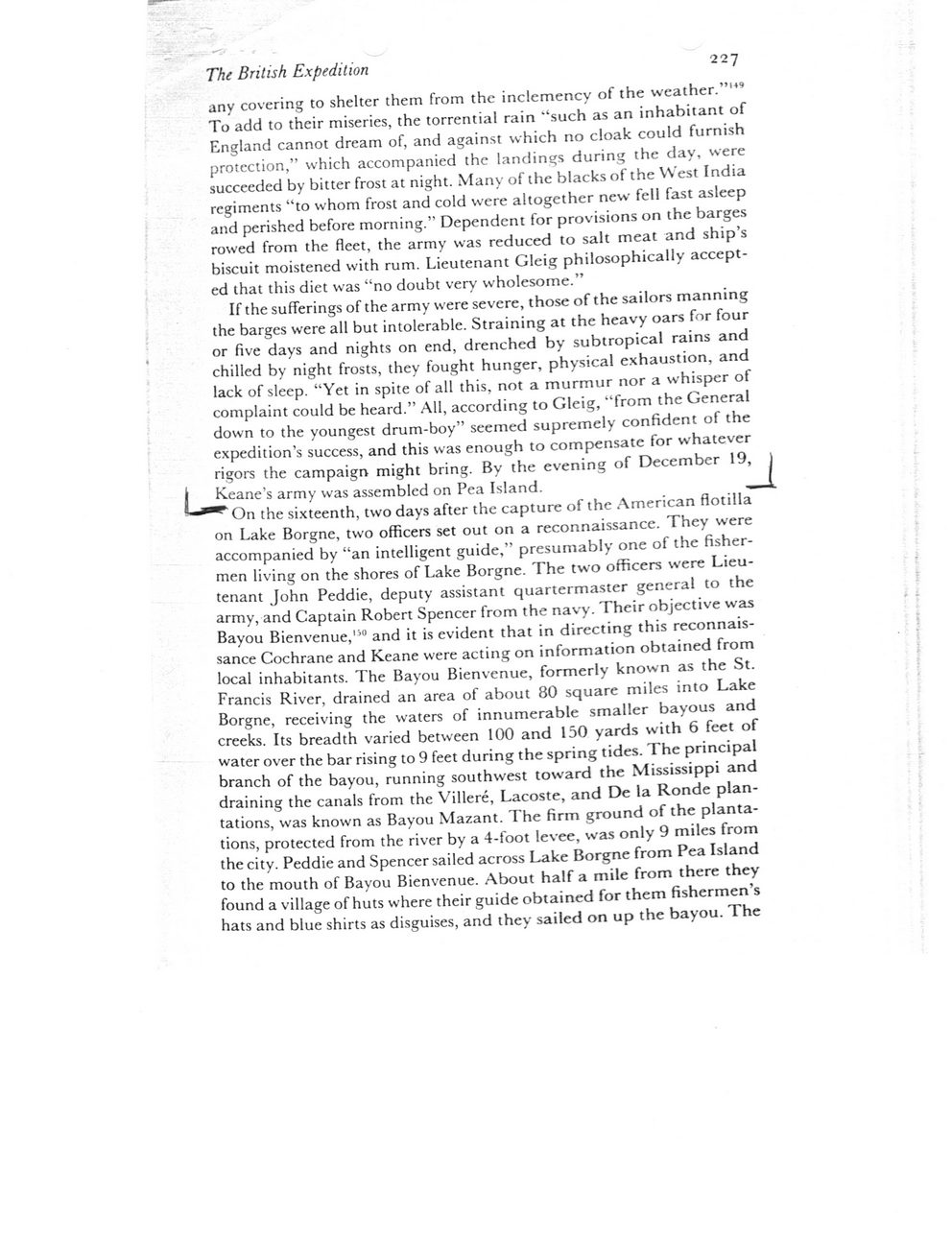This text was obtained via automated optical character recognition.
It has not been edited and may therefore contain several errors.
The British Expedition 227 any covering to shelter them from the inclemency of the weather.?149 To add to their miseries, the torrential rain ?such as an inhabitant of England cannot dream of, and against which no cloak could furnish protection,? which accompanied the landings during the day, were succeeded by bitter frost at night. Many of the blacks of the W est India regiments ?to whom frost and cold were altogether new fell fast asleep and perished before morning.? Dependent for provisions on the barges rowed from the fleet, the army was reduced to salt meat and ship?s biscuit moistened with rum. Lieutenant Gleig philosophically accepted that this diet was ?no doubt very wholesome.? If the sufferings of the army were severe, those of the sailors manning the barges were all but intolerable. Straining at the heavy oars for four or five days and nights on end, drenched by subtropical rains and chilled by night frosts, they fought hunger, physical exhaustion, and lack of sleep. ?Yet in spite of all this, not a murmur nor a whisper of complaint could be heard.? All, according to Gleig, ?from the General down to the youngest drum-boy? seemed supremely confident of the expedition?s success, and this was enough to compensate for whatever rigors the campaign might bring. By the evening of December 19, Keane?s army was assembled on Pea Island. _ On the sixteenth, two days after the capture of the American flotilla on Lake Borgne, two officers set out on a reconnaissance. They were accompanied by ?an intelligent guide,? presumably one of the fishermen living on the shores of Lake Borgne. The two officers were Lieutenant John Peddie, deputy assistant quartermaster general to the army, and Captain Robert Spencer from the navy. Their objective was Bayou Bienvenue,'50 and it is evident that in directing this reconnaissance Cochrane and Keane were acting on information obtained from local inhabitants. The Bayou Bienvenue, formerly known as the St. Francis River, drained an area of about 80 square miles into Lake Borgne, receiving the waters of innumerable smaller bayous and creeks. Its breadth varied between 100 and 150 yards with 6 feet of water over the bar rising to 9 feet during the spring tides. The principal branch of the bayou, running southwest toward the Mississippi and draining the canals from the Villere, Lacoste, and De la Ronde plantations, was known as Bayou Mazant. The firm ground of the plantations, protected from the river by a 4-foot levee, was only 9 miles from the city. Peddie and Spencer sailed across Lake Borgne from Pea Island to the mouth of Bayou Bienvenue. About half a mile from there they found a village of huts where their guide obtained for them fishermen?s hats and blue shirts as disguises, and they sailed on up the bayou. The

Battle of 1814 227